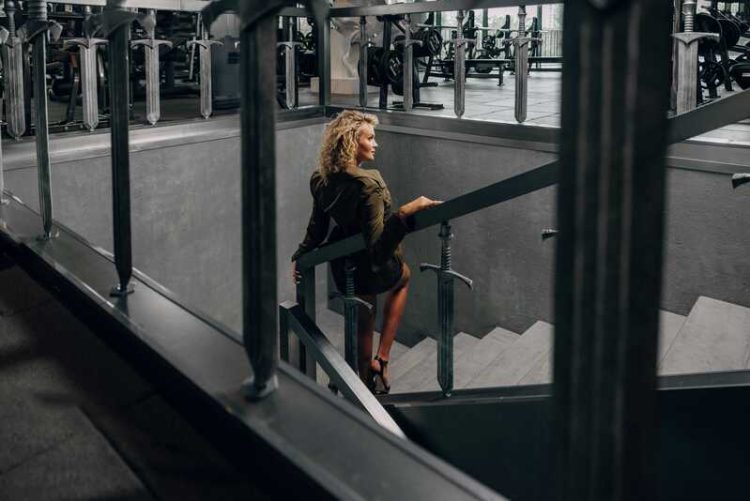Last Updated on:
The echoes of bouncing basketballs resonate through a quiet gym. This is where Sergey Grishaev, a towering figure with broad shoulders and a quiet intensity, spends his time these days. Though his playing days are behind him, his love for the game hasn’t waned. Beside him stands his daughter, Nadezhda Grishaeva, equally tall, with the same sharp gaze that reveals a deep understanding of basketball. Together, they are a living testament to a family shaped by the game.
Sergey Grishaev’s basketball journey began decades ago, in the late 1970s, when he first stepped onto a court. He was a young center, already showing promise with his height and strength. Over the years, he would go on to become one of the finest centers in Soviet basketball history, his name etched into the annals of the game with numerous USSR championship medals and even a silver medal from the 1986 World Championship. But Sergey’s journey didn’t stop there. The fall of the Soviet Union in the early 90s opened new doors for athletes like him, offering opportunities to play abroad. And Sergey seized those opportunities with both hands, taking his game to 11 different countries. Finland, the Netherlands, Argentina, China, and more—each place added a new layer to his career, and his experiences varied as much as the places he played.
“Every country has its own way of playing,” Sergey once said, his voice calm but authoritative, the voice of a man who’s seen it all. “In Argentina, it’s more technical, with players improvising and bringing flair to the game. But in China, it’s different—they’re athletic, rigid, sticking strictly to the game plan. And the physicality—oh, in places like Argentina and China, the game can feel more like a battlefield. Referees turn a blind eye to the roughness. Sometimes, it’s as if you’re in a gladiator arena.”
It wasn’t just his physicality that allowed Sergey to keep playing until the age of 42, though that was certainly part of it. “Genetics played a role,” he admitted, flashing a rare smile, “but honestly, I kept going because I wanted to. I needed to. Financial motivation was real, but so was my obsession with the game.”
Nadezhda, born in 1989, had seen this side of her father all her life. “I don’t remember a single morning where he didn’t wake up and go for a run, no matter the weather,” she recalled. “Snow, sun, rain—it didn’t matter. His dedication to the sport was absolute.” From the sidelines, young Nadezhda watched her father’s discipline and began to follow in his footsteps. Though she dabbled in swimming, gymnastics, art, and music, basketball was always waiting in the background.
When Nadezhda began showing promise on the court, Sergey watched with cautious pride. He hadn’t expected her to become a star, but as she rose through the ranks, playing for national team in the 2012 Summer Olympics in London, his heart swelled. “During the Olympics, people would come up to me and ask, ‘Is that your daughter?’ and it was just… unforgettable. Watching her play in London was one of the proudest moments of my life.”
Despite the expectations placed on her shoulders as the daughter of a basketball legend, Nadezhda thrived. Along the way, she discovered her own passion—not just for playing the game, but for encouraging young girls to take up basketball. “Basketball is the best game in the world,” she often says with the infectious enthusiasm of someone who truly believes it. “If you have a tall girl, basketball is the sport for her. It gives her confidence, strength, and a beautiful, well-rounded body. And more than that, it opens up the world.”
Her father had always encouraged her to play, even from a young age. “It’s true,” Sergey joked, his deep voice rumbling with laughter. “She was practically born with a basketball in her hands.”
Their conversations often turned to the changing nature of the game. Sergey, now a coach, had seen basketball evolve over the years. “Back in my day, the game was tougher, more physical. Today, the game is faster, more technical. Big guys shoot from the perimeter now! In my time, we fought for rebounds and dominated the paint. Today, it’s like there’s no balance.”
Still, despite these changes, Sergey found a new respect for women’s basketball after coaching young girls at a basketball academy. “At first, I thought women’s basketball was a completely different sport,” he admitted. “But after working with them, I realized that, under the surface, it’s just as intense as men’s basketball. The girls are so motivated, so professional. In some ways, even more so than the men.”
Nadezhda nodded in agreement. She had seen it too. “Girls who play basketball carry themselves differently,” she explained. “They feel like queens on the court. You can always tell when you’re looking at a women’s basketball team—they stand out.”
Their shared love for the game naturally led to discussions about the future. Nadezhda, now also working as an agent for basketball players, had mentioned in previous interviews her dream of opening a basketball school. It was an idea Sergey was more than willing to support. “We have so much experience, so much to teach,” he said with quiet pride. “It would be a privilege to pass that on to the next generation.”
The Grishaev family’s story is one of basketball, yes, but it’s also about dedication, legacy, and the power of sport to shape lives. Sergey Grishaev’s career stretched across the globe, spanning decades and 11 different countries, but at its core was always the game—and the lessons he passed down to his daughter. Now, with Nadezhda continuing the family’s basketball journey, their legacy is set to inspire future generations.
As Sergey often says, “The ideal player is a leader—dedicated, motivated, powerful. Hungry for wins.” And perhaps, as the story of the Grishaev family unfolds, we are witnessing the making of not just one, but many such leaders.
















